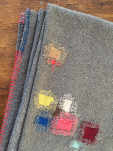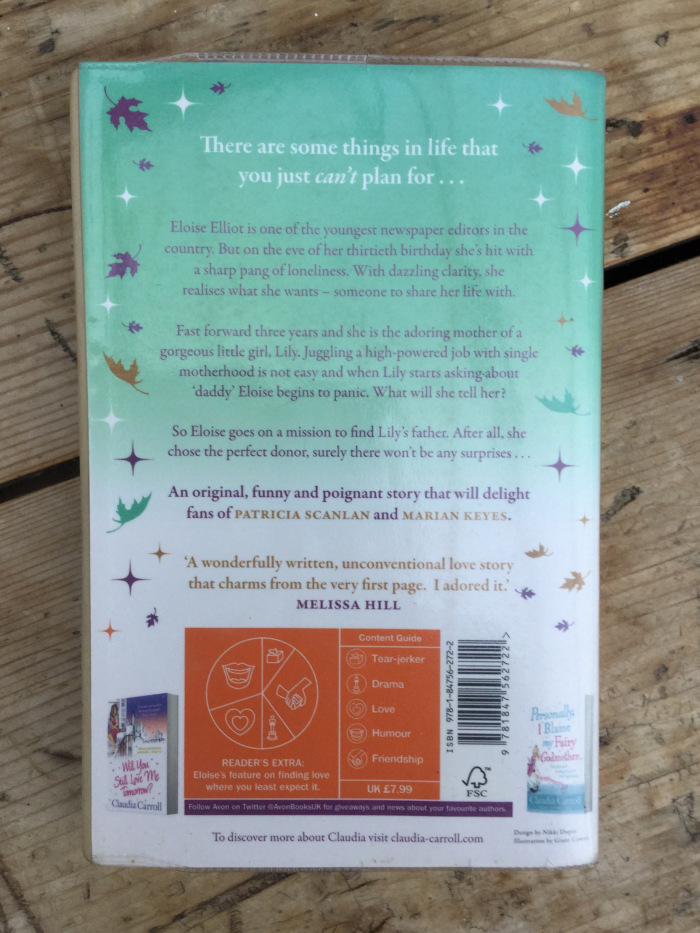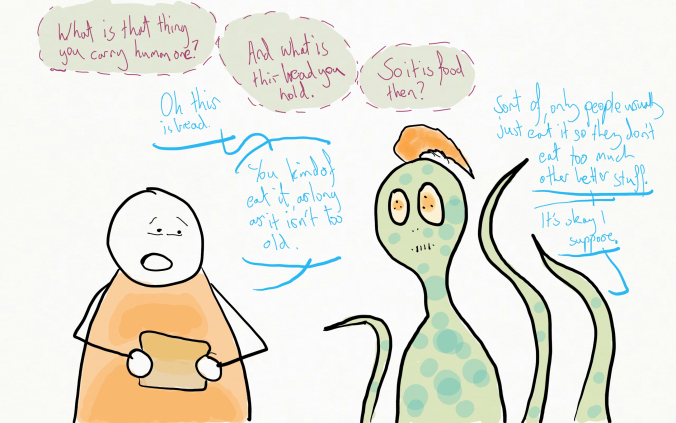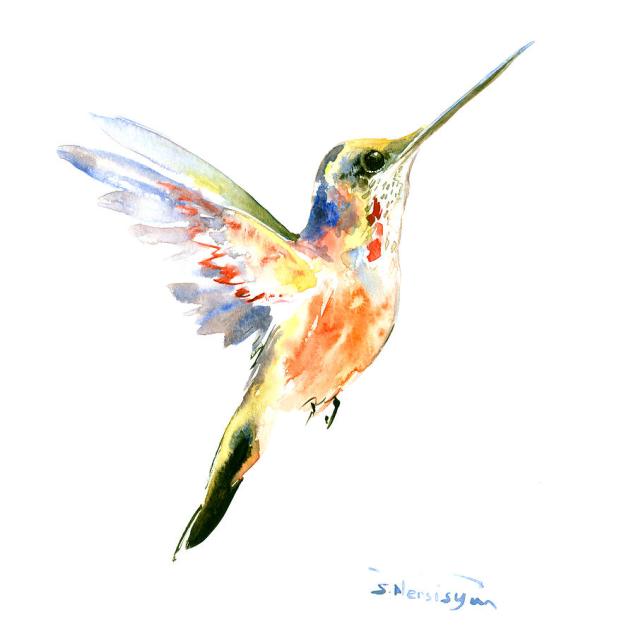Palimpsest: ‘mid 17th century: via Latin from Greek palimpsēstos, from palin “again” + psēstos “rubbed smooth“‘ (The New Oxford American Dictionary, 3rd edition)
A palimpsest refers to a manuscript/page that is reused after having its original text erased. In more general terms, it refers to something that has been reused or altered but still possesses traces of its earlier use. The term is also used in architecture and science, e.g.: the reutilization of buildings and materials, an impact crater that has been smoothed out (A Dictionary of Astronomy, 2 rev. ed.), a landscape bearing the imprint of two or more geomorphological processes (A Dictionary of Earth Sciences, 3 ed.).
From these definitions, I can easily see how this term might be used metaphorically, conceptually and in a wide range of contexts. Several ideas that come to mind as to how it might relate to textiles (and some other themes) include:
- recycling, reuse, repurposing
- layering
- slow design, sustainability
- tradition, generations, heirlooms
- processes
- time
- memory, past, history
Room Three: Fantastic (pp.68-70)
- Totes Hause ur (1985-), Gregor Schneider
- constant alteration of place
- architectural palimpsest
- walls behind walls, windows behind windows, repetition, redundancy
- dislocation, anxiety, confusion
- hiding, oppression
- transforming, immersive
Dean, T. and Millar, J. (2005) Art Works: Place. London: Thames & Hudson.
Textile layering
I can think of several possible definitions of textile layering, including covering of body, covering of surface or other textile(s), replacing of other textile, transparency/overlapping, repetition, patching/quilting, wrapping, etc. Below are some examples I’ve found.
(All links accessed on 21 December 2017)
Boro is a Japanese term referring to mended or patched textiles. Boro textiles were created out of necessity by the working and rural classes of the Edo era. A single garment would be repeatedly mended and passed down over several generations. They were often reinforced with Sashiko stitching, a form of functional and decorative embroidery.
https://en.wikipedia.org/wiki/Boro_(textile)
https://www.heddels.com/2015/08/all-about-boro-story-japanese-patchwork/
Canal, Moraine, Gravel (2014), Ronan & Erwan Bouroullec
 Canal, Moraine and Gravel, ©Studio Bouroullec
Canal, Moraine and Gravel, ©Studio Bouroullec
- 3D knitted upholstery fabric
- jersey knit
- front side made of melange wool and polyester yarns, dark and light fibres
- back side made of polyester yarns, accent colors
- internal structure is visible when two layers are joined
http://www.bouroullec.com/?p=267
The Veiling (1995), Bill Viola
 The Veiling (1995), Bill Viola / Photo: Roman Mensing
The Veiling (1995), Bill Viola / Photo: Roman Mensing
The Veiling was a video and sound installation consisting of nine parallel scrims (a piece of gauze that is used as a screen or backdrop) hanging from the ceiling in a row and used as surfaces for two video projections placed on either end. The layers of textiles created multidimensionality and different levels of transparency.
http://www.fabricworkshopandmuseum.org/Artists/ArtistDetail.aspx?ArtistId=8db57031-7ee0-48fa-ac7a-e62e6ec16e95
 Hikaru Noguchi
Hikaru Noguchi
Hikaru Noguchi, from Japan based in England, mixes traditional knit patterns and techniques with colorful darning designs applied to damaged or moth-eaten clothing. She even offers the service of fixing any worn or damaged Hikaru Noguchi products.
http://hikarunoguchi.com/knit/?cat=15
http://textilefabrics.jp/201702/creators/hikaru-noguchi-textile-design/
 Norwegian
Sweater (2010), Celia Pym
Norwegian
Sweater (2010), Celia Pym
London based artist Celia Pym explores the concept of time and the sentimental value of garments through darning and the reconstruction of damaged pieces. Her piece ‘Norwegian Sweater’, chosen as a finalist in the 2017 Loewe Craft Prize, was a very damaged sweater that she mended with white thread.
http://celiapym.com
http://1granary.com/schools/royal-college-of-art/celia-pym
 Under Cloud
Under Cloud(2012), Choi So Young
Choi So Young is a Korean artist that uses secondhand jeans to create urban landscapes. By using different scraps of denim, she is able to achieve different colors, tones, and textures. Her works can be seen as collages, paintings and textile pieces all at once.
http://www.artnet.com/artists/choi-so-young/
http://blog.patternbank.com/choi-young-painting-denim
Olga (2007), Birgit Dieker
 Birgit Dieker / Photo: Marcus Schneider
Birgit Dieker / Photo: Marcus Schneider
- 189 x 80 x 40 cm (around 6 feet)
- layers of textile forming a figure
- holes show interior, core, thickness
- color, texture
http://www.birgit-dieker.de/object.html?id=40
Other examples of textile layering
- clothes (esp. during winter, several layers for warmth)
- fashion
- quilts
- kimonos
- art installations
- collages





